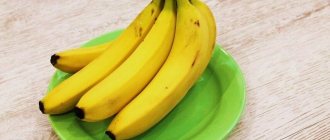0
Prepared by: Oksana Ch.
01/27/2021 Cooking time: 12 hours 0 minutes
| Save | I cooked) | Estimate |
I want to share a recipe for making kefir for babies at home. You don't need to have any special culinary skills, the main thing is to be patient and have the necessary ingredients.
The benefits of kefir
Timely introduction of fermented milk products into a baby’s diet is very important, since this drink helps solve a lot of problems that almost every baby has, and it also has a preventive positive effect on the functioning of the systems:
- Since kefir is made from milk, it is a valuable source of calcium, which serves as a building material for bones, cartilage and teeth;
- the bacteria contained in the drink help normalize the functioning of the digestive system, and young kefir helps soften stool, and two-day-old kefir, on the contrary, strengthens it; using fermented milk products of different production dates, you can gently adjust your child’s stool;
- kefir is very useful for muscles and soft tissues, since the easily digestible protein it contains is a “building material” for them;
- By populating the intestines with beneficial bacteria, kefir strengthens the body’s defenses;
- Fermented milk products effectively and quickly increase children's appetite, which will be very useful for a one-year-old little one.
Yogurt
This word was introduced into our menu relatively recently. To produce yogurt, two microorganisms are used - Bulgarian bacillus and thermophilic streptococcus. The famous Russian scientist Ilya Ilyich Mechnikov considered the Bulgarian stick a remedy capable of ensuring longevity, and in his old age he ate milk fermented with its help. What is good about yogurt: low acidity. If for some reason you cannot consume kefir, feel free to switch to yoghurt.
Photo from https://ru.depositphotos.com
Myths about yogurt
1. “All yoghurts are healthy.” Yogurts can only be “live”; synthetic analogues of yogurt have lost the privilege of being called such since 2001. We carefully read the name: yogurtters, yoghurtovichs, biogurts, etc. They have nothing in common with live yoghurts. But they really want to be one, as massive advertising hints at.
What is a “thermalized product”? - This is a heat-treated product. Every living thing in it was killed. In order for the resulting mass to be eaten, dyes, flavors and preservatives are added to it; the resulting dessert is not poisonous and can be eaten. But it is not useful, especially for young children: take pity on the pancreas and kidneys that have not yet formed.
Chemical additives will not harm the adult body, which is accustomed to all sorts of, excuse me, rubbish; children do not need it. For example, take essences used as flavorings: they contain butyl ester compounds of acetic acid. Butyl acetate is a solvent used in the production of paints for a moment.
However, there is a third type of yoghurt: they are additionally enriched with biocultures, which are highly viable (enrichment with “useful flora” occurs after repeated heat treatment of the raw materials); in this case, the label of fruit yogurt should also contain information about the concentration of biocultures. If you are holding yogurt with a month-long shelf life, but the information on the packaging promises the presence of some beneficial bacteria, do not rush to raise an eyebrow in surprise: perhaps this is just yogurt that has been enriched after processing.
To distinguish a live product from a thermized one, carefully study the letters on the jar:
Yogurt “live”:
Shelf life – no more than 7 days. Storage temperature from +0 to +6 degrees. They are in the refrigerator at the store. “Yoghurt” is written large on the top of the package. Contains yoghurt starter. The content of lactic acid microorganisms is usually indicated.
Yogurt product:
Shelf life is more than 10 days. Storage temperature – from +4 to +25 degrees. The word “yogurt” is not written on the top of the package (but, for example, “yogurt” or “biogurt”). On the side it says “thermalized yoghurt product”. There is no yoghurt starter in the composition.
2. “Only fresh fruit.” Fruit acids are not friendly with lactic acid bacteria; they simply kill them. Preservatives are used to preserve the fruit filling. Therefore, fruit yoghurts are automatically classified as a beautiful, but unhealthful fermented milk. Advertising promises that pieces of fresh fruit are added to yoghurts - this is impossible. Only canned or frozen fruits and berries are added to yogurt, because fresh fruits will oxidize the yogurt, turning it into flakes in a minute.
Entry deadlines and standards
Special children's yoghurts without fruit additives (such as "Agushi") can be offered to a child aged 10 months or older. Adult yoghurts and fermented milk products without fillers are introduced into a child’s diet no earlier than one year. Yogurt products made from baked milk (“Varechka”) are not recommended for children under two years of age due to their high fat content (6%)
Also pay attention to the presence of sugar and flavorings. Yoghurt allowance at one year of age: no more than 100 ml
Introduction of kefir into complementary foods
Despite the obvious benefits of fermented milk product, it is recommended to introduce it into the diet of infants with caution and strictly after the baby has mastered vegetables, cereals and fruits. Kefir is quite difficult to digest, and it is especially difficult for a baby’s unstable intestines. To avoid risks, pediatricians recommend introducing fermented milk products only from 7-8 months.
Artificial babies, as well as babies with anemia and rickets, are introduced to kefir before their peers. Such children are given the drink from 7 months. For breastfeeding babies, kefir is offered later - at 8-8.5 months.
To avoid allergies, as well as to allow the digestive system to smoothly “get acquainted” with the new product, kefir should be introduced into the baby’s diet gradually.
- For the first time, the child can be given 2-4 teaspoons of the drink to try, and then fed with the usual food;
- since the rash and diarrhea can appear within several days, it is better to wait 2-3 days before the next meal with kefir;
- if a rash or diarrhea does not appear, you can increase the amount of kefir in your diet by 2-3 tablespoons;
- At first, you need to introduce kefir into complementary foods, taking breaks of 2-3 days, and when the baby gets used to the fermented milk product, you can eat it daily;
- To make it more convenient to monitor the baby’s condition, and also to “take advantage” of the fact that kefir stimulates the appetite, at first it is better to give him a fermented milk product in the first half of the day;
- You cannot sweeten kefir with sugar, since the latter will cause fermentation in the intestines, which will cause severe discomfort to the baby;
- If your baby doesn’t like the sour taste of kefir, you can sweeten it slightly with baby fruit puree.
How to make homemade kefir for a child
Description
Homemade kefir: recipe with photos
Have you ever tried homemade kefir? Oh, how tasty and tender it is. Homemade kefir is similar to yogurt: so thick that you can eat it with a spoon, very pleasant to the taste, light and satisfying, and so healthy! A glass of homemade kefir every day will give a head start to all store-bought Activias and pharmacy Lactavits.
Both children and adults can and should eat it. At first I made kefir for the children, and then, after trying it, I increased the portion two or three times, so that there was enough for the adults in the household.
Now I will share with you all the nuances and secrets of how to make delicious kefir at home.
I first started making homemade kefir for my child when it was time to introduce my son to this fermented milk product, at 7-8 months. Back then, you had to go to the dairy kitchen to get sourdough and seize the moment, since sourdough was delivered once a month in small quantities. But, having fermented it once, on the basis of the resulting “Simbivit” it was possible to prepare a new kefir for 2-3 weeks. Then for some time we were supplied with starter cultures for kefir, yogurt and even homemade fermented baked milk (yes, it is made from sourdough and baked milk, yummy!) from our relatives, the employees of the dairy plant.
And now you can buy starter culture in many pharmacies, and not only for kefir, but also for a wide variety of fermented milk - yogurt, fermented baked milk, simbivit, and so on. This one, for example.
Ingredients for homemade kefir:
- freshly boiled milk;
- starter for kefir.
How to make kefir at home:
The main condition for success is sterility and warmth. If the dishes are not washed, hooligan strangers may enter the friendly environment of lactic acid bacteria and will not allow them to ferment the milk peacefully and according to all the rules. And if you cannot maintain the temperature conditions - the milk will be too hot or, on the contrary, cold, then the kefir may also not ferment. So wash the glass jar and spoon well with baking soda, wipe it with a clean towel and dry it. You can make homemade kefir in a thermos, but I make it in a jar.
Boil the milk. As for what kind of milk to use for kefir, the debate continues. There is an opinion that store-bought milk, if it contains all sorts of preservatives and other GMOs, will simply not make kefir, and you need to take homemade milk. But homemade milk must also be taken from trusted people, but I don’t take it at all - ever since sand was discovered at the bottom of a bottle of homemade milk. I think that to make kefir at home, you can buy store-bought pasteurized milk, but not for long-term storage, but plain milk, in bags.
So, we boil the milk, pour it into our clean container and let it cool to 38-42C - this is exactly the temperature that lactic acid bacteria like. Of course, you shouldn’t stick a thermometer into the jar - I try it with...um... a clean finger.











